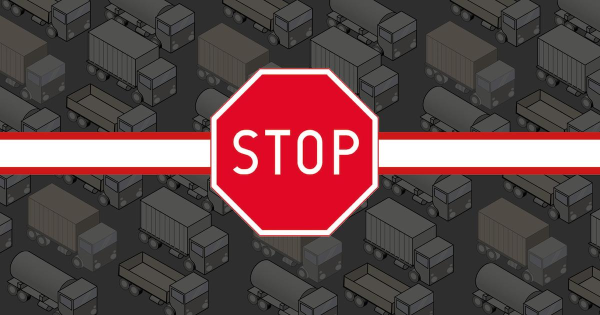
Vermeintlich offene Grenzen, aber immer mehr Kontrollen
In letzter Zeit haben einige europäische Länder die Grenzkontrollen wieder eingeführt, um die wachsende Zahl illegaler Einwanderer zu bekämpfen. Dies hat die Situation der Berufskraftfahrer erheblich erschwert, da sie nun längere Wartezeiten an den Grenzen in Kauf nehmen müssen. Hinzu kommen die Proteste der Transportunternehmen, die die Arbeit der Berufskraftfahrer ebenfalls behindern.
Die folgenden Staaten haben beschlossen, die Grenzkontrollen wieder einzuführen:
❌Österreich
Die Landgrenze zwischen Slowenien und Ungarn kann nur bis zum 11. Mai 2024 überquert werden. Darüber hinaus werden bis zum 6. Dezember 2023 Kontrollen an den Grenzen zu Tschechien und bis zum 2. Dezember 2023 zu der Slowakei durchgeführt.
❌Deutschland
Um die Wirksamkeit des Kampfes gegen Menschenschmuggel zu erhöhen und die illegale Migration einzudämmen, sind vorübergehende Grenzkontrollen an den Grenzen zu Polen, Tschechien und der Schweiz eingeführt worden. Die Kontrollen sollen bis zum 5. Dezember 2023 andauern, eine weitere Verlängerung ist jedoch mit hoher Wahrscheinlichkeit möglich.
❌Polen
An der Grenze zur Slowakei sind Kontrollen eingeführt worden, um illegale Migration von der Balkanroute zu verhindern. Sie sollen bis zum 3. Dezember 2023 fortgesetzt werden. Reisende müssen sich daran erinnern, Reisedokumente (Personalausweis oder Reisepass) mitzuführen. Die polnisch-slowakische Grenze darf an 17 Straßenübergängen überquert werden:
• Radoszyce
• Immergrün
• Muszynka
• Piwniczna-Zdrój – Mnišek nad Popradom
• Jurgów
• Chyżne
• Korbielów
• Zwardoń – Skalité Platforma
• Leluchów – nur für Bürger der EU und der EFTA, sowie deren Ehepartner und Kinder.
• Konieczna – nur für Bürger der EU und der EFTA, sowie deren Ehepartner und Kinder.
• Niedzica – ebenso wie oben.
• Łysa Polana – ebenso wie oben..
• Chochołów – ebenso wie oben..
• Winiarczykówka – ebenso wie oben..
• Ujsoły – ebenso wie oben..
• Bór – ebenso wie oben..
• Jaworzynka – Čierne –Skalité – ebenso wie oben..
Geschlossene Grenzübergänge
❌Finnland
Aufgrund der illegalen Einwanderung hat die finnische Regierung beschlossen, die Grenzübergänge entlang der Grenze zu Russland vorübergehend zu schließen, mit Ausnahme des nördlichsten Grenzübergangs, Raja-Joosepin. Derzeit ist die Stelle 4 Stunden am Tag für TIR-Transporte im geöffnet. Drei Grenzübergänge zu Russland – Kuusamon, Sallan und Vartiuksen – bleiben bis zum 23. Dezember 2023 geschlossen.
Blockierung der Grenzübergänge zur Ukraine
❌Polen
Der Protestaktion polnischer Transportunternehmen an den polnisch-ukrainischen Grenzübergängen in Hrebenne, Korczowa, Dorohusk und Medyka hat erhebliche Auswirkungen auf die Situation der Fahrer. Nur Pkw, Busse, Transporte lebender Tiere, sowie humanitäre und militärische Hilfsgüter werden durchgelassen.
❌Slowakei
Aufgrund der Protesaktion des Verbandes slowakischer Transportunternehmen kann an der slowakisch-ukrainischen Grenze in Vyšné Nemecké-Uzhgorod zu Staus kommen. Die Slowakei hat nicht offiziell über die Blockierung des Grenzübergangs nicht offiziell informiert und auch nicht darüber, ob sie sich den polnischen Transportunternehmen angeschlossen haben. Allerdings sollten Lkw-Fahrer auf eine solche Möglichkeit vorbereitet sein.
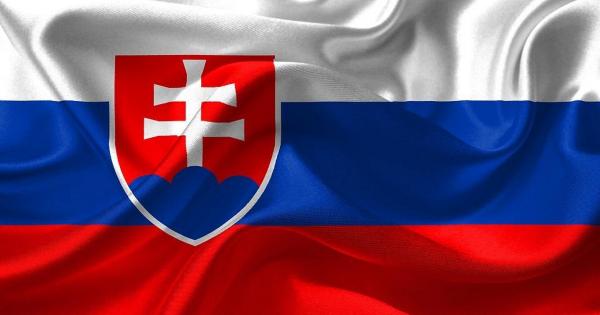
Slovakia: a suspension of the HGV ban on November 17
At the request of ČESMAD Slovakia, a general exemption from the HGV ban has been granted on the November 17, which is a public holiday ( Struggle for Freedom and Democracy Day).
The exemption applies to all HGVs traveling on motorways, first class roads and roads with international traffic, arriving in Slovakia from some neighboring countries, whose destination (e.g. company headquarters or the place of unloading) is located in Slovakia.
Please be advised that that no exemption has been granted on November 1, which means that the driving ban is in effect as usual from 00:00 to 10:00 PM.

Austria: an exit ban on the A10 motorway from October 26 to November 5
During this period lorries are prohibited from leaving the A10 motorway at selected junctions and using adjacent regional and municipal roads to avoid traffic jams. This ban does not apply to vehicles transporting goods to destinations in Austria.
The exit ban applies on following junctions of the A10 motorway:
❌ In the direction of Salzburg:
• from the Pfarrwerfen-Werfen junction (exit 44) onto the L229 road to Werfenweng
• from the Pongau junction (exit 46) via A10;46;R5 ramp onto the L276 road to Kreuzberg
• from the Eben im Pongau junction (exit 60) to the B99 Katschberg Straße
❌ In the direction of Villach:
• from the Hallein junction (exit 16) towards Villach onto the L 107 Wiestal Landesstraße (roundabout)
• from the Golling-Abtenau junction (exit 28) towards Villach onto the B 159 Salzachtal Straße
• from the Kuchl junction (exit 22) to the B 159 Salzachtal Straße
❌ In addition, lorries are not allowed to leave the A 10 motorway using exit roads from the Landzeit service areas (Gasthof Nord and Süd):
• via the Gasthofsiedlung road
• via the industrial area of Gasthof Süd
to enter adjacent municipal roads, except for vehicles transporting goods to destinations in Austria.
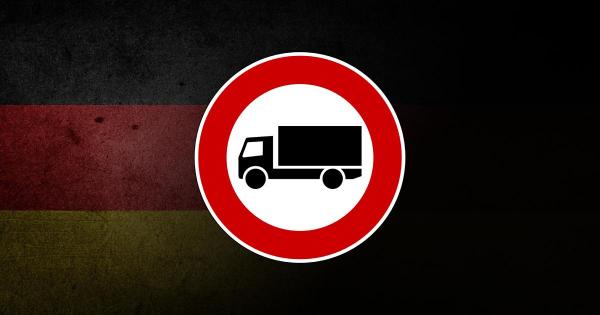
Germany: HGV driving bans on 31.10 and 1.11
We have received a number of inquiries regarding HGV driving bans on these days.
Here is a summary of all necessary information.
❌ October 31 (Reformation Day) is a public holiday in:
– Brandenburg,
– Bremen,
– Hamburg,
– Mecklenburg-Vorpommern,
– Lower Saxony,
– Saxony,
– Saxony – Anhalt,
– Schleswig-Holstein,
– Thuringia.
The holiday driving ban is in effect from 00:00 to 10:00 PM (in Lower Saxony from 06:00 to 10:00 PM – see information below);
❌ November 1 (All Saints Day) is a public holiday in:
– Baden-Württemberg,
– Bavaria,
– North Rhine-Westphalia,
– Rhineland-Palatinate,
– Saar.
The ban is in effect from 00:00 to 10:00 PM (in North Rhine-Westphalia from 06:00 to 10:00 PM – see information below).
Exceptions in Lower Saxony and North Rhine-Westphalia
There are special regulations that apply on Reformation Day and All Saints Day in the states of Lower Saxony and North Rhine-Westphalia in the years 2020-2025 . Reformation Day (October 31) is a public holiday in Lower Saxony, while All Saints Day (November 1) is a public holiday in North Rhine-Westphalia. To make sure that lorry drivers traveling through Lower Saxony and North Rhine-Westphalia are not banned from driving for 2 days in a row, the hours when the ban is in effect have been changed. On both holidays, the ban will last from 6:00 AM to 10:00 PM. In addition, both federal states allow lorries to use the main transit routes along A 1, A 2, A 30, A 31 and A 33 during a public holiday when the ban is in effect.
A list of motorway sections where HGV traffic is allowed between 6:00 AM and 10:00 PM on public holidays in Lower Saxony or North Rhine Westphalia:
➡️ A1 – from the Lotte/Osnabrück junction to the border of North Rhine-Westphalia and Lower Saxony near the Osnabrück-Nord junction and in the opposite direction.
➡️ A2 – From the Bad Oeynhausen junction to the border between Lower Saxony and Saxony-Anhalt and in the opposite direction.
➡️ A 30 – from the Bad Bentheim border crossing to the Bad Oeynhausen intersection with the A2 motorway and in the opposite direction.
➡️ A31 – from the Schüttorf motorway junction to the border between Lower Saxony and North Rhine-Westphalia and in the opposite direction.
➡️ A33 – from the Osnabrück-Süd motorway junction to the Dissen-Süd junction and in the opposite direction.
Transit traffic to and from the federal state of Berlin on Reformation Day (31.10)
The state of Berlin, in agreement with the states of Brandenburg, Mecklenburg-Western Pomerania, Saxony, Saxony-Anhalt and Thuringia, has suspended the driving ban (with the possibility of cancellation at any time) on October 31 on the following federal motorways: A 2, A 20, A 24 , A 4, A 9, A 10, A 11, A 12, A 13, A 14, A 15, A 17, A 19, A 38, A 71, A 72, A 73, A 111, A 113, A 114, A 115, A 117, A 143 in the above-mentioned federal states, for lorries traveling from Berlin (point of departure) or to Berlin (point of destination).
Lorries are not allowed to leave the motorway in the federal states where there is a holiday driving ban on Reformation Day, except for situations when a motorway is completely closed following an accident or owing to construction work. In such cases, drivers are allowed to use a signed diversion route. If no diversion has been indicated, the shortest route to the nearest motorway entrance should be used. Lorries are also allowed to leave the motrway if they need to be towed but they should be parked in the nearest suitable place.
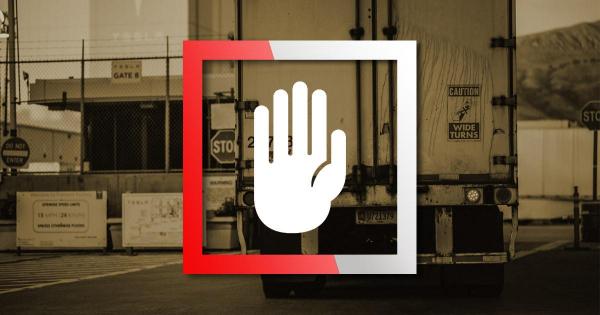
Germany introduces checks at the land borders with Poland, the Czech Republic, and Switzerland
In order to combat smuggling more effectively and reduce irregular migration, German Minister of the Interior, Nancy Faeser, has notified the European Commission about the introduction of temporary border controls at the land border with the three countries.
This means that the federal police can now use the same measures that they have already been using for some time at the border with Austria. Targeted checks have been underway for several weeks, and the frequency of random checks carried out in the entire border area by patrols composed of Polish and Czech border guards has increased. A a joint action plan has also been prepared in cooperation with the Swiss counterparts.
The activities of smugglers are becoming increasingly brutal and unscrupulous, as evidenced by the death of seven people who were smuggled across the German-Austrian border on Friday evening. It is now necessary to take all possible measures to put an end to these cruel practices. The Federal Police can now flexibly deploy a whole range of stationary and mobile measures at the border, depending on the current situation. We are in close contact with the neighboring countries and other federal states to ensure the best possible coordination of activities on both sides of the border. In coordination with Switzerland, we have decided to further expand our activities based on a joint action plan. At the same time, we want the controls to have as little impact as possible on daily lives of commuters, traders and travellers said Nancy Faeser.
Internal controls at the land borders with Poland, the Czech Republic and Switzerland will initially last 10 days (starting from October 16) but may be extended for up to two months. Renewed controls at the internal land border with Austria will last for 6 months starting from November 12. The legal basis is provided by Article 25 ff. of the Schengen Borders Code (EU Regulation 2016/399).
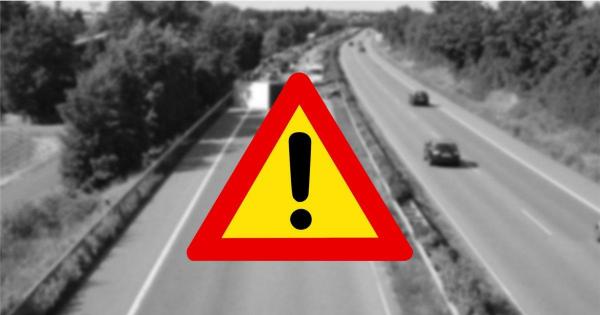
Austria: Weekend closure of the Mannswörth junction on the S1 and the A4 exit onto the S1
As part of the ongoing resurfacing work to improve noise protection on Vienna\’s outer ring road, two more junction closures are scheduled to take place this weekend: the exit from the A 4 motorway in the direction of Hungary onto the S1 and the Mannswörth junction on the S1 in the direction of Vösendorf.
Both junctions will be closed from 9 p.m. on Friday, October 13, to 5 a.m on Monday, October 16 at the latest.
Available diversion routes
The diversion for the exit from the A 4 in the direction of Hungary to the S 1 in the direction of Vösendorf follows along the B9 and the Schwechat Ost slip road onto the S 1. This means that traffic on the A 4 continues as far as the airport (Flughafen) junction and is then diverted onto the B9 via the airport exit to rejoin the S 1 in the direction of Vösendorf at the Schwechat Ost junction.
The diversion of the slip road onto the S 1 from Mannswörth: At Mannswörth, traffic will continue in the direction of Schwechat to the A 4 as far as the airport junction and from there will be diverted to the S 1 via the B9 at Schwechat Ost.
The diversion for the exit from the S 1 in the direction of Mannswörth in the direction of Schwechat follows via the Schwechat Ost junction. Drivers can use the roundabout in order to return to the S1 as far as the Mannswörth junction.
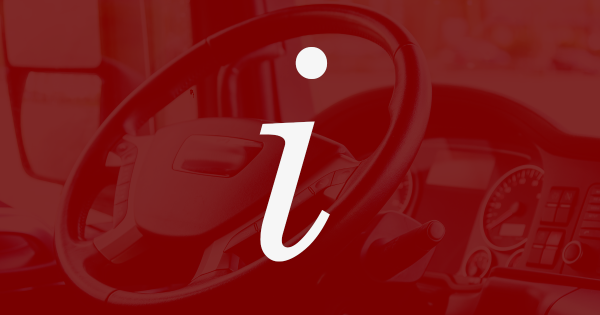
Germany: weekend closure of the A7
From 10:00 PM on Friday, the A 7 will be completely closed in both directions between the junctions (AS) Heimfeld and Volkspark.
With the exception of AS Waltershof, all junctions along this stretch of the motorway (Volkspark, Bahrenfeld, Othmarschen, Heimfeld) will be closed from 9:00 PM. The AS Waltershof remains open until 9:45 PM. In addition, access to the southbound A 7 from AS Stellingen will no longer be possible starting from 9:00 PM. The motorway will reopen at 5:00 a.m. on Monday, October 9 this year.
Official diversion routes:
A diversion route during via the A1, A21 and B205 is available for through and national traffic in both directions.
• for traffic from the south, from the Bucherholzer triangle (43) / Horster triangle (40) via the Maschener intersection (39) and then along the A1
• for traffic from the north,from the AS Neumünster-Süd (15) along the B205
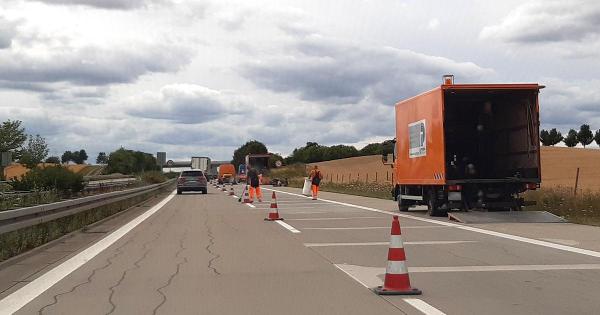
Germany: A 57 closed for a few days
The closure is due to the renovation of the carriageway surface in the direction of Nijmwegen between the Neuss-Süd triangle and the Neuss-West interchange.
The A 57 motorway will be closed from 20:00 on Friday, September 29, until 6:00 a.m. on Wednesday, October 4. Traffic on the A 57 will be diverted at the Neuss-Süd triangle, while further diversions will be introduced for traffic from the A 46 from Düsseldorf to the A 57 towards Nijmegen from the Neuss-Süd triangle along one lane to the Neuss-Norf junction.
Consequently, the junctions Neuss-Norf (on-ramp only), Neuss-Hafen, Neuss-Reuschenberg and, at the Neuss-West junction, the connection between the A 46 and the A 57 towards Nijmegen will also be closed. A diversion for through traffic will be available from the Neuss-Süd triangle, via the A 46 to the Hilden interchange, from there along the A 3 to the Ratingen-Ost intersection and from there on the A 44 to the Meerbusch intersection.
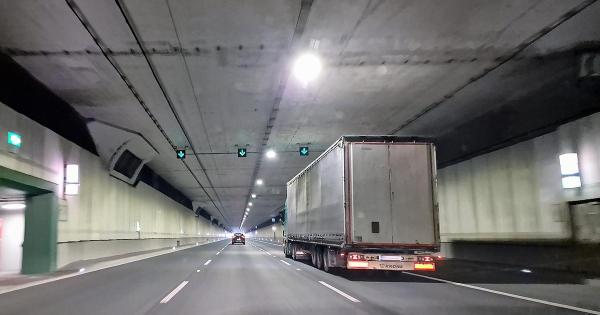
Total closure of the Mont Blanc Tunnel for 9 consecutive weeks
In order to enable technical maintenance work, the Mont Blanc Tunnel will be totally closed for a period of 9 consecutive weeks, starting at 8:00 AM on Monday, 16 October,
The tunnel is scheduled to be reopened by 10:00 PM on Monday 18 December.
During this period, please use the recommended alternative routes.
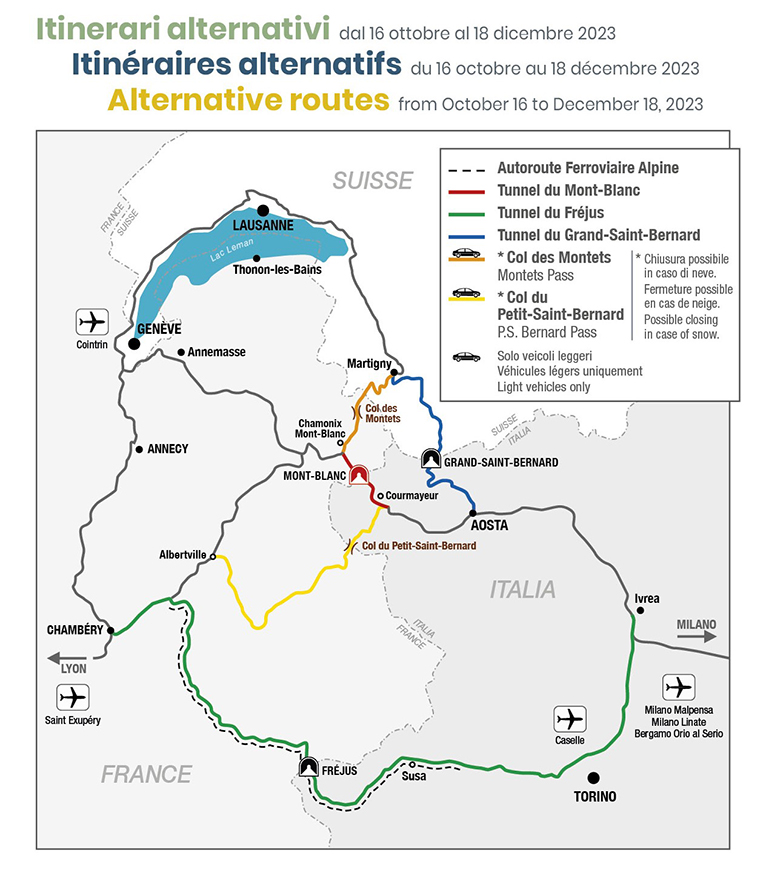
As a reminder, the total closure of the Alpine road connecting Chamonix-Mont-Blanc in France with Courmayeur in Italy, originally scheduled for Monday, September 4, has been postponed due to the closure of the Fréjus Tunnel to heavy goods vehicles.
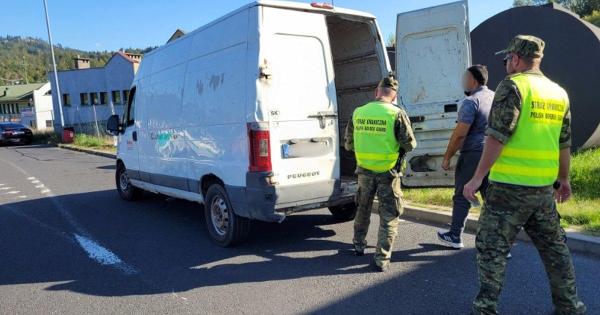
Poland has intensified checks on the border with Slovakia and the Czech Republic
The Border Guard, Police and Road Transport Inspectorate are conducting random checks of buses and other vehicles that may be transporting illegal migrants. Since yesterday, about 150 people from the Middle East and Africa have been detained while trying to get through to Germany.
A statement from Poland’s Minister of the Interior and Administration, Mariusz Kamiński, after a conversation with the head of the German Ministry of the Interior, Nancy Faeser.
Today, the 28 of September, I had a telephone conversation with German Minister of the Interior, Nancy Faeser. We talked about the situation on the Polish-German border and the increasing migration pressure along the Balkan route. I want to stress that media reports about the alleged reintroduction of permanent border checks at the internal Schengen border between Poland and Germany are untrue. The German side has only decided to intensify activities of its border guard along the border with Poland. This is not equivalent to reinstating border checks according to the relevant Schengen rules.
At the same time, given the growing migration pressure along the Balkan route,for example through Hungary, Slovakia, Poland to Germany, we have decided to intensify activities of the Border Guard, the Police and the Road Transport Inspectorate along the borders with Slovakia and the Czech Republic. These involve random checks of buses and other vehicles that may be transporting illegal migrants from this direction. As a result, only yesterday, approximately 150 illegal migrants from the Middle East (including Syria) and Africa, trying to get to Germany, were detained. It turned out that those involved in migrant smuggling were short- and long-term residents of Germany (with visas or residence rights).
Today, I have informed the German Minister of the Interior, Nancy Faeser, about these illegal practices. We have agreed that Polish and German uniformed services will cooperate more closely in combating illegal migration. A special task force will be created to this end, consisting of officers from Poland, the Czech Republic and Germany.
Mariusz Kamiński
Polish Minister of the Interior and Administration